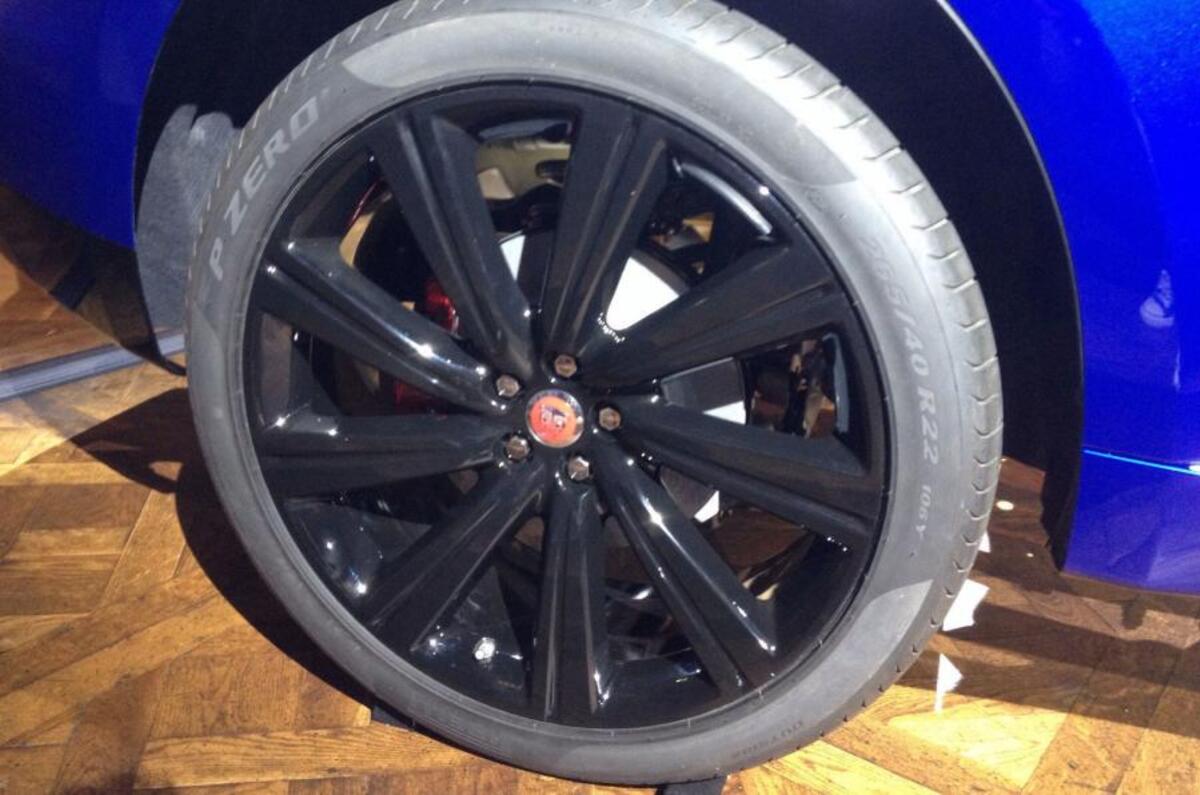Last night Ian Callum had a big smile on his face discussing the 22in wheels he’d designed for the Jaguar F-Pace, the largest alloys seen on a Jaguar and the largest offered in the segment.
Which got me thinking: how big can alloys go? And to what cost to ride quality?
Callum said a bigger SUV (not that he was committing to doing one…) would mean bigger wheels again, but 22ins was the right size for the F-Pace; 23ins wouldn’t look right to his eyes.
F-Pace engineers Andy Whyman and Dave Shaw said that the bigger wheels had not meant a lower profile tyre, and that the F-Pace’s 22in wheel offered “superior grip, comfort and greater sidewall protection than rival 20in wheels”.
All the wheel sizes on the F-Pace (18in, 19in, 20in and 22in) had tyres of the same diameter and rolling radius, which meant ride quality can be tuned closely between the different options. The 22in tyre is a summer one only however, so don’t expect the same level of off-road ability on that one compared to the smaller wheels.
The F-Pace’s 22in alloy also has the same rolling radius of that of a Land Rover Discovery, which hardly has a brittle ride. “The tyres are a standard height from road to rim,” said Whyman, “this is not a low-profile tyre. We can have the best of both [design and ride].”
The tyres also stick out 12.3mm from the rim to help prevent the rims being kerbed, a figure that’s apparently 240% greater than the protection offered from the largest wheels offered on an Audi Q5 or a Porsche Macan.
Whyman said that the 22ins offered only a very small trade off in ride, and to be fair the products from Jaguar stablemate Land Rover have revealed that large alloys need not mean a shoddy ride quality should the right tyre be fitted. Another piece of intrigue attached to finding out what the F-Pace is like to drive, then.




Join the debate
Add your comment
Sound familiar, remove Macan insert F-Pace.
The new Macan is a car that certain people will buy because they want a 4x4 as a status symbol, even though they don't actually need a sports SUV in their lives.
by Matt Saunders
23 May 2014.
Ambivalence is a tricky condition to define. When a car makes me feel that way, it’s normally because I haven’t driven it enough. Not this week. This week, I’ve done plenty of miles in Porsche’s new Macan Turbo – all in the process of our full road test, which you’ll be able to read in the not too distant future. Ambivalence reigns.
For a two-tonne SUV, this new-breed 4x4's handling is little short of breathtaking; even more amazing than its performance level – which is pretty serious, too, thanks to the 395bhp twin-turbo V6. I’d dismissed this car's early reviews, which all hinted at the sports car-level poise and balance. “It’ll be good,” I thought, “but it can’t be that good.”
It can. On the road, the Macan pivots underneath you and dances its way beyond an apex like a true pedigree rear-driver. It’s quick, it’s poised and it’s entertaining. And it’d make a Range Rover Sport feel a bit bloated and dim-witted, to be honest.
I should be in love with a car like that. Thing is, while the Macan Turbo is undoubtedly a compelling driver’s car, I’m not sure it’s such a great SUV.
Off-road angles seem barely relevant in this debate. In the Macan’s case, though, they’re fine. In fact, they're pretty typical for a medium-sized 4x4 and quite good if you have the optional air suspension. The back seats, however, are only averagely roomy: the packaging here doesn’t seem as good as plenty of family saloons. The boot is a good size, but the sloping rear window takes away a fair old chunk of loading space. On practicality, your average four-wheel-drive executive estate car offers considerably more.
You could describe any number of compact 4x4s in those terms, of course – Range Rover Evoque included. Still, the Macan seems like a more conspicuous offender than most, because it seems to be the luxury SUV for the man who neither wants or needs one. It’s for the man who’s dying to make room in his life for a proper sports car, but isn’t quite willing to accept the compromise. The man who doesn’t need the capability of a genuinely roomy, family 4x4 – otherwise he’d buy one, and for a lot less than this Macan. And the man who must, therefore, be attracted to the SUV mainly as an object of desire – in this particular case, one with a Porsche badge attached.
Perhaps it’s that last bit I’m really reacting against: the true coming of age of the compact SUV as a status symbol. The Evoque might have started the ball rolling, but the Macan has taken the idea to another level – and, to me, it’s little more tasteful a concept in 2014 than the Cayenne was in 2002.
Lets not beat around the bush
Buy shares in tyre companies now.